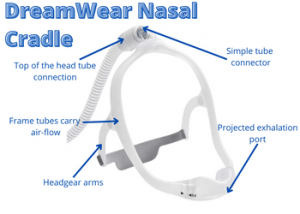- By Clay Rollyson
- /
- /
When you purchase a Portable Oxygen Concentrator you have spent a large amount of money on an item that is critical to your life. More than likely, you are looking to gain more freedom and independence. Just as important as the make and model of Portable Oxygen Concentrator you purchase is the company that you purcahse it from. How do they support you and what can you expect from them in the future. Here we discuss how we at CPAPmyway support you after the Portable Oxygen Concentrator purchase.
Continue reading...
Warranties for our Portable Oxygen Concentrators
Every POC (Portable Oxygen Concentrator) has a manufacturer warranty that begins on the day you purchase the unit. Those warranties are from the manufacturer and while the time frames may be very similar between them, the process may not be. For instance, we have one manufacturer that requires all of their products to go back to their factory for repairs. While another allows one of our local repair companies to repair their POCs under warranty. The timeline for how long you are without your POC varies by weeks between the two. We will always work to coordinate the quickest possible repair option for your POC if it ever goes down. So, we will act as the go-between if you ever have issues. Simply reach out to us during regular business hours and we will coordinate the rest. You can also checkout our Warranty Page here to understand our warranty process fully.Top 4 Issues with Portable Oxygen Concentrators:
There are 4 things that we see very often from people using POCs. When these things happen you typically get an alarm and alert that something is wrong. This can be concerning for the user, especially if they are away from home. Luckily these issues are typically resolved quickly and on your own. Let’s look at those in detail below:-
No breath detected
Most POCs are “pulse-dose” which means that they deliver the oxygen to you on inhalation. That means that it has to detect your inhalation to dose the oxygen to you. If your nasal cannula is out of your nostrils or there is a restriction or kink in your tubing it may miss your breath. If this happens your POC will alarm, and you will have to adjust the tubing and take some deep breaths to correct this issue. -
Low Battery
This is usually the most obvious issue that occurs. Your POC will alarm to let you know that you are nearing the end of your battery life. To clear up this issue, you simply connect back to your home or car charger. You can continue to use the POC even while it recharges. -
POC is overheating
This is another common issue. The POC must have plenty of circulation to keep itself cool. If you cover it up or put it in a confined space, it will overheat. If this occurs, then you have to shut the machine down. Once you shut it down, it is best to unplug it and take the battery off to help it cool faster. Usually, 5 minutes will do the trick. Then you can start the POC back up and get back to regular breathing. -
Low purity/sieve bed replacement needed
As the sieve bed filters in your POC go bad, the oxygen purity will start to go down. At this point your POC will alarm to indicate that it is time to change the sieve beds. Some POCs will say, “check vent”, “replace columns”, or “low purity”. You usually will have a couple weeks after that first alarm to replace the sieve beds before you are at a critical point. Contact us to let us know this is happening and we will work to get your maintenance taken care of.
What do I do if my Portable Oxygen Concentrator is out for repair?
We very rarely have major breakdowns on the POCs that we sell. That is why we carry the models that we do, and do not carry others. A repair issue for you is a repair issue for us, and we don’t like issues. However, sometimes things go wrong. That is why if your POC goes down during the first year after your purchase and has to go back for warranty repair, we will issue you a loaner (as long as inventories allow). That loaner may not be the exact model that you have, but we will get you by until your POC is repaired and returned. Even after that year we offer a discounted rental rate for a rental POC if you need one while yours is out for repair. Rest assured we will do everything we can in these circumstances to get you back up and running quickly.What kind of maintenance is needed on my Portable Oxygen Concentrator?
All POCs require some sort of maintenance. For maintenance details on each POC you can visit the individual POC that you are interested in here. For most POCs, there are some basic things that need maintenance. Let’s detail them below for you.- External Filters– Most POCs have a filter where the air intake is. This filter is built to collect dust and particles before they enter your machine. These filters are usually rinsed or replaced at regular intervals. They are a critical piece of maintenance on your POC.
- Internal Sieve Bed Filters– All Oxygen Concentrators have Sieve Bed Filters. These filters filter the oxygen out of the air so that you can just breathe in the pure Oxygen. Over time they will go bad. In most cases you can expect 1-2 years of lifespan on these filters. That will depend on how much you use your POC and where you use your POC. Warranties on the sieve beds are usually 1 year but can be longer for some models.
- Batteries– Just like any other device in your life, your POC most likely has a lithium-ion battery internally. They are good batteries and will typically last a long time. However, they will wear down over time. If you begin to see a reduction in battery duration it may be time to replace your battery. Luckily most models allow you to do that yourself easily. Batteries are almost always warrantied for one year.
- Tubing and cannulas– These parts are disposable and should be changed out regularly. Discoloration and kinking are signs that they should be replaced immediately.
What can I do to make my Portable Oxygen Concentrator last?
There are a few things to keep in mind about POCs in reference to how and where you use and store it. These things can dramatically improve the longevity of your device.- Do not Smoke around the POC– Your device is constantly circulating your room air through internal filters. Smoke is the number one thing that clogs these filters.
- Keep external filters clean– If the POC cannot breathe well, it will overheat and can also cause serious issues with the compressor.
- Store the POC in air conditioned when not is use– If you leave your POC in your hot car or outside it will hurt your battery longevity.
- Keep the POC charged– If you store your POC away and do not charge it regularly it can hurt the duration of your battery.




































